Flower gardening is such a joyful hobby. Watching as your plants wake up from their winter slumber to blossom and bloom once again simply makes the heart happy. Building a flower garden is a labor of love well worth the effort, and if perennial plants are the foundation of the garden, flowering annuals are the accessories that truly make a garden flourish.
Finding annual flowering plants that produce a lot of flowers but are still low maintenance can be challenging. Many annuals have short blooming seasons, and others can reseed aggressively, crowding out neighboring plants over the years.
When you happen upon a flowering annual that is easy to care for, has a long blooming season, and won’t take over the entire garden, it’s a fortuitous occasion indeed. Orlaya is a lovely little flowering annual that fits that tall order wonderfully.
Orlaya Overview
|
|
|
What is Orlaya?
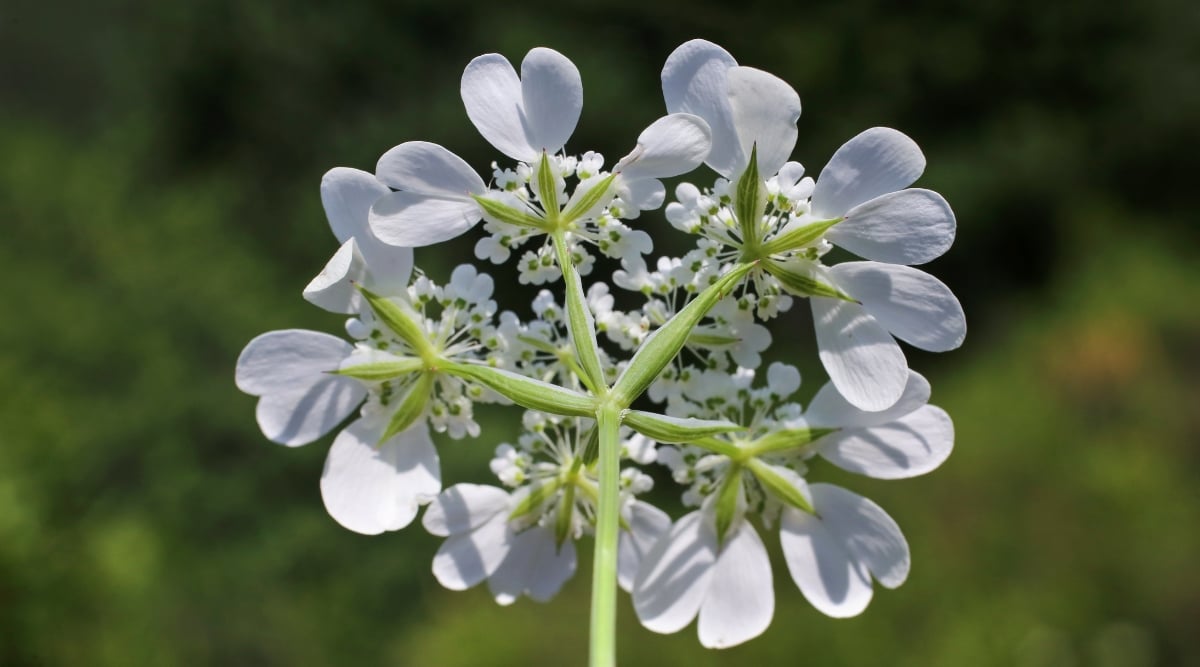
Orlaya is a wonderful annual flowering plant that makes a beautiful cut flower and can replace other, more invasive plants with a similar appearance. If you love the look of Queen Anne’s Lace but want to avoid the trouble of controlling this aggressive self-seeder, orlaya will be a perfect fit for your garden.
Also known as white laceflower, orlaya is a tender annual that can be grown just about anywhere. Its delicate flowers and fernlike foliage bring a wildflower vibe to the garden landscape and fit beautifully into a cottage or prairie garden.
History
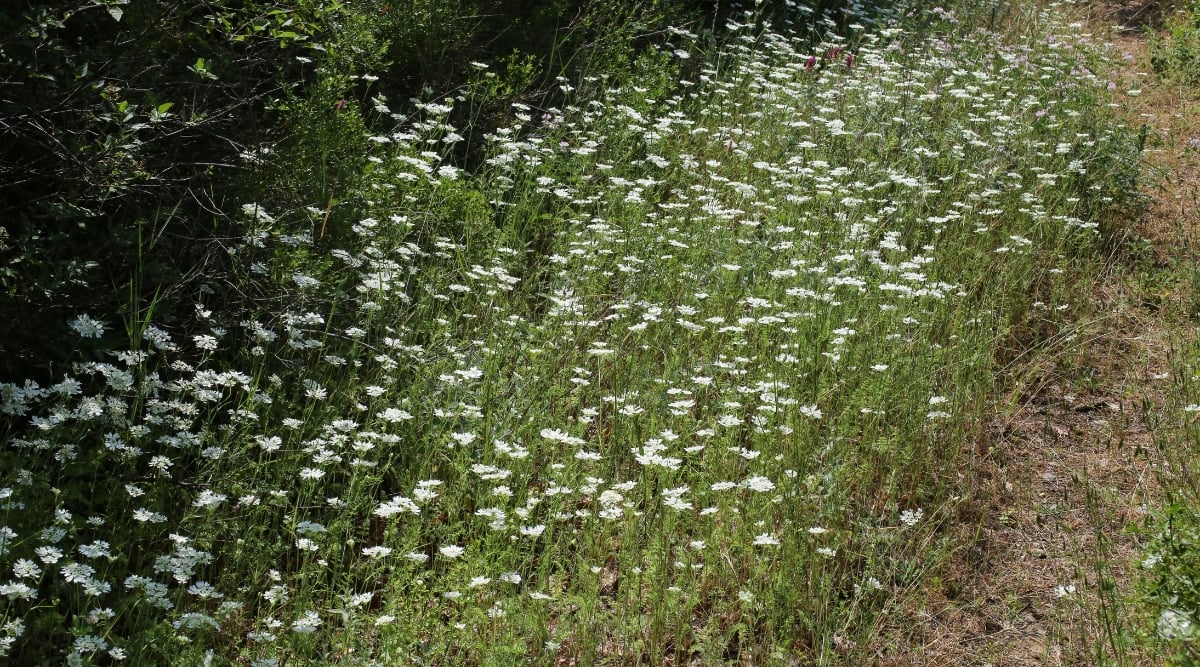
Orlaya finds its origin in the Mediterranean region of Europe, where it has long been cultivated in countries such as Italy, Greece, and Spain. Its adaptability and attractiveness have made it a popular plant for gardens as well as in meadows and other open spaces.
The plant made its way to North America via early European settlers, and it became popular rapidly. The attractive foliage and delicate lace-like flowers charmed gardeners and found their purpose not only as ornamentals but for medicinal use as well.
Fast forward to the late 19th and early 20th centuries, when orlaya cemented its value to ornamental gardeners with a fondness for cottage-style gardens. With its wonderful texture and charm, it has become very popular in floriculture, making a name for itself as a filler flower in cut flower arranging.
Native Area
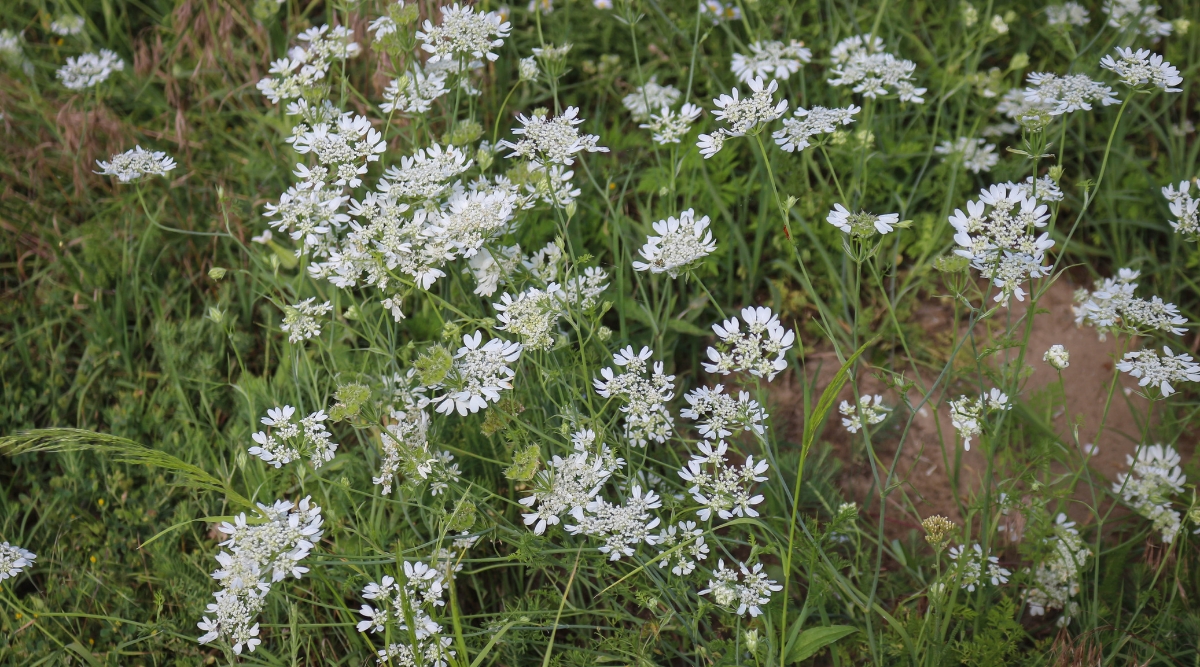
Orlaya is native to Europe, where it is thought to have originated in the Mediterranean region. It can be found growing wild now throughout much of the European continent.
You’ll see it growing quite happily in locations such as vineyards and olive groves, but in general, it is an exceptionally adaptable plant. This adaptability is part of what has made this such a popular and widely cultivated plant.
Characteristics
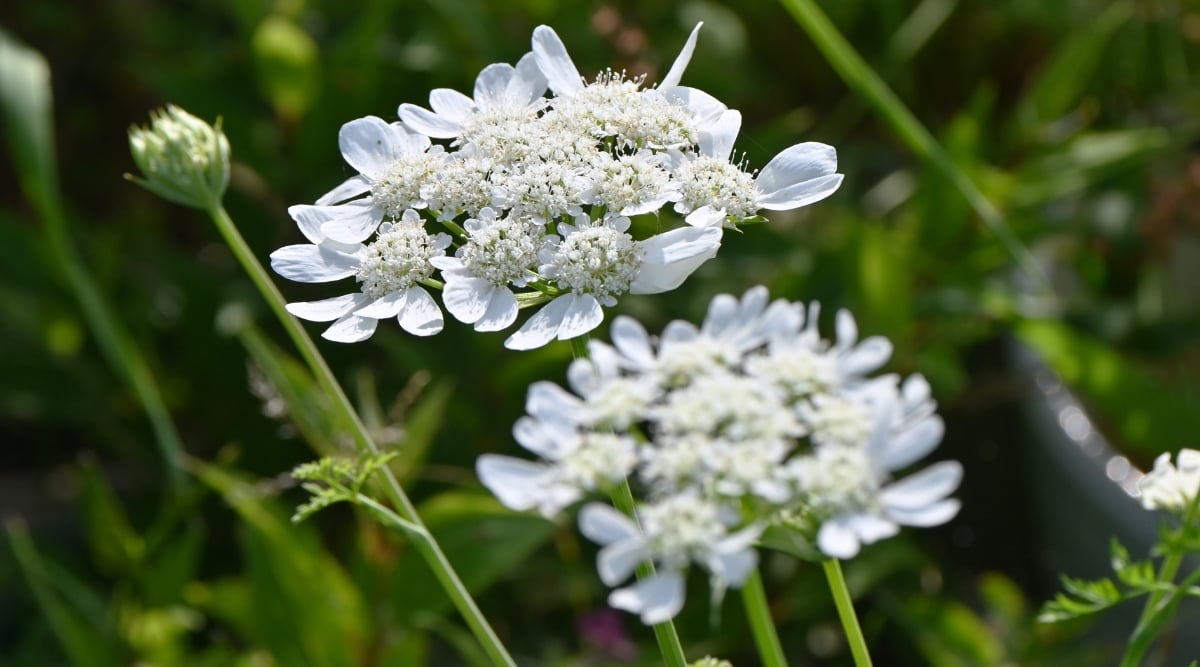
Orlaya is a flowering annual that is frost tender and self-seeds well when given the right environment. It has fernlike foliage that contributes a wild and carefree element to the garden and looks right at home in wildflower or meadow-style beds.
The flowers bloom in flat-topped clusters that bear a resemblance to Queen Anne’s Lace and Bishop’s Lace but without the aggressive spreading tendencies of these other attractive plants. The flowers are white and appear in different sizes on the same umbel, creating a lacy appearance.
These are nectar-rich and appealing to pollinators as they tend to bloom in great abundance. They open atop long, sturdy stems, making them excellent, long-lasting cut flowers. Orlaya is a recipient of the Award of Garden Merit from the Royal Horticultural Society for its outstanding garden performance.
Uses

Orlaya is an excellent addition to the pollinator garden. Its long bloom season and abundance of nectar-rich flowers provide a great source of energy for both native pollinators and honey bees. It is widely used as an ornamental plant and a member of the cutting garden, as well.
Not only is orlaya versatile in the garden, it has long been used for health purposes as well. Studies have been performed to affirm the efficacy of orlaya essential oil in anti-tumor and cancer treatments. It has also been used historically as an anti-inflammatory.
Where to Buy Orlaya
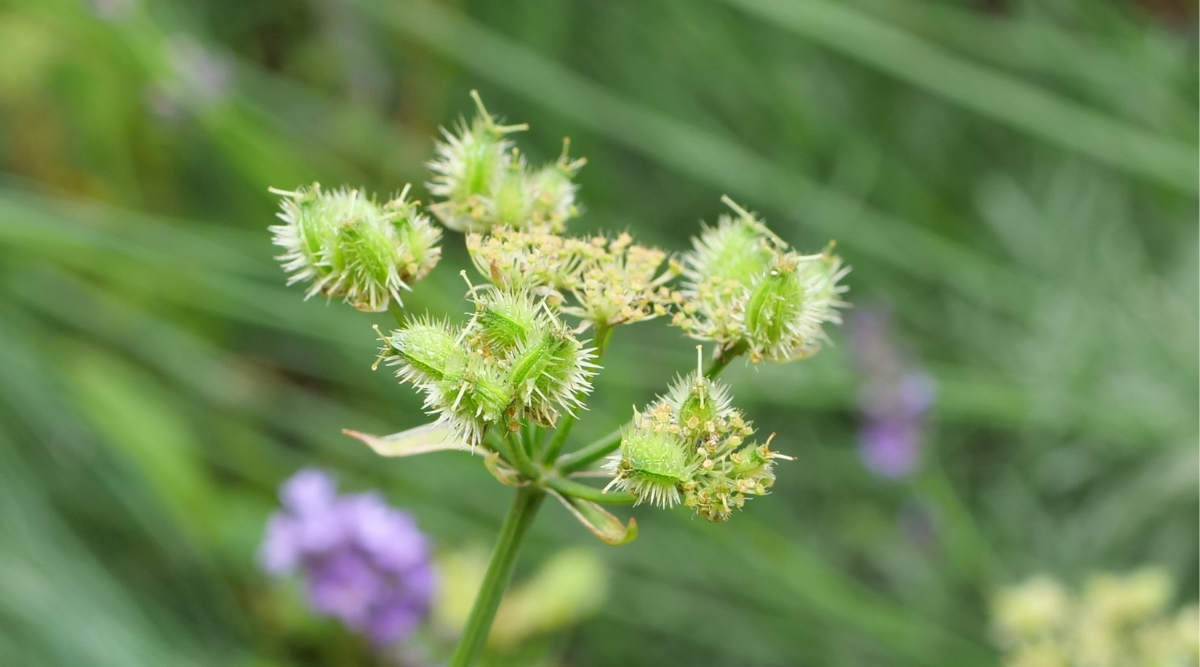
Orlaya seeds are widely available at retailers and online. Nursery starts are typically available in spring and can be found at many local nurseries due to the popularity of the plant.
Planting
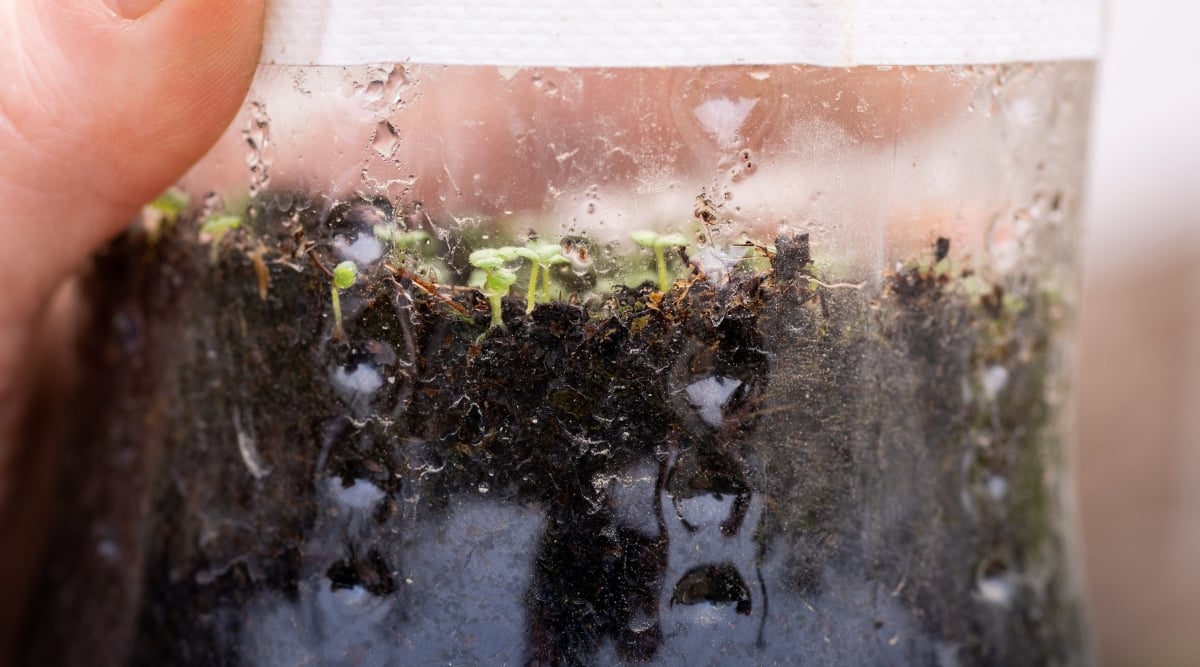
The seeds need a brief period of cold stratification, and they take quite a while to germinate. If you plant seeds in fall, do so before the ground freezes. If you decide to plant in spring, you’ll need to stratify your seeds for one to two weeks if you want a good germination rate.
Sow seeds directly in fall or start them over the winter and transplant them in spring. Orlaya is fairly frost tolerant, but a hard freeze will kill off seedlings, so leave your seedlings indoors until there is no risk of a freeze. Mature plants can tolerate rather cold temperatures.
When your seedlings have two or three sets of true leaves, this is the ideal time to plant. Once established, they are usually strong enough to transplant, but doing so could disturb the tap root and cause stress to the plant.
When planting from nursery starts, spring is the ideal time. Your fall-sown seeds will result in earlier flowers, so planting from seed in fall is the most common practice. This ensures that the seeds get the freezing and thawing that they need to germinate without requiring the gardener to do the extra work of cold stratifying.
How to Grow
This is an easy plant to grow and maintain, as it is virtually pest and disease-free. With the right amount of sun and moisture, you should have a bounty of lacy white blooms about nine to ten weeks after your seeds sprout.
Light
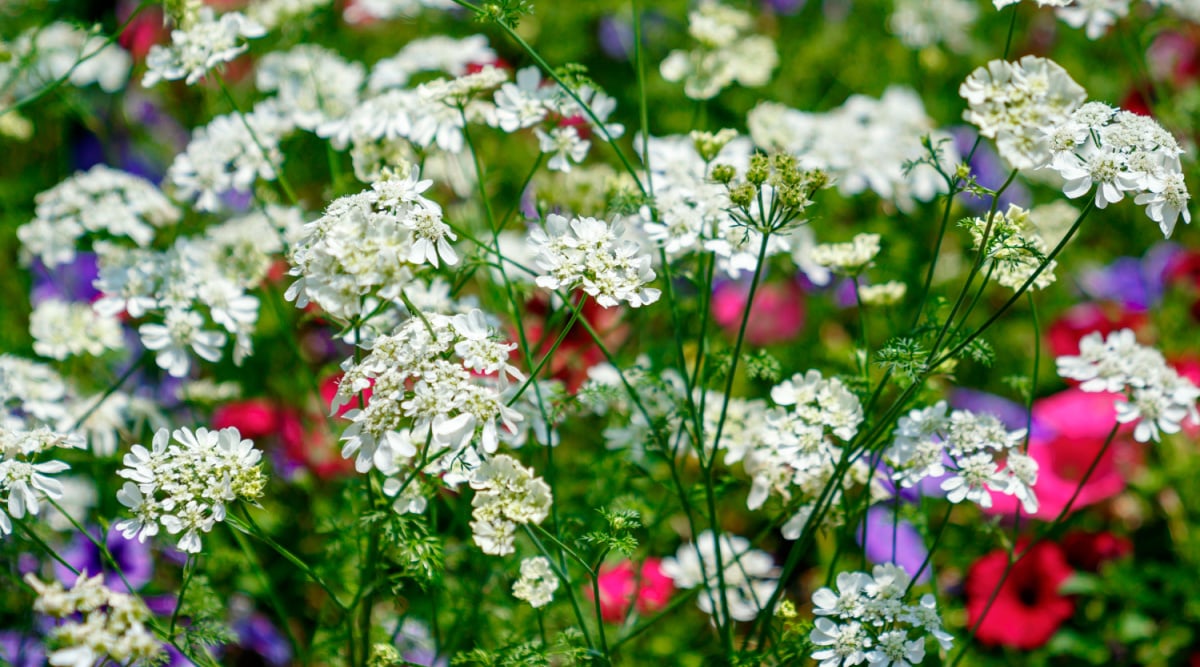
While orlaya can technically grow in partial shade, they won’t bloom nearly as well. The ideal exposure level is full sun for these plants. If you live in a very warm climate, it’s a good idea to give your orlaya plants a bit of afternoon protection, but they should receive as much sun as possible during the early hours of the day.
Water
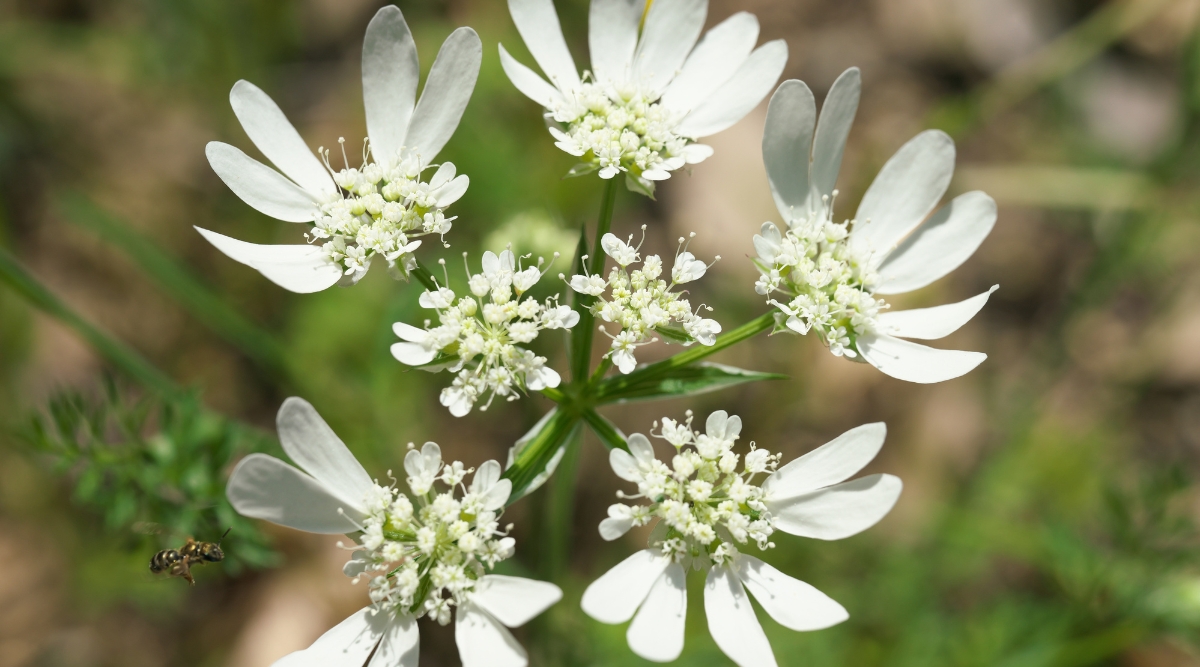
Orlaya needs a moderate amount of water when the plants are young. Give plants at least one inch of water weekly. They do not like standing water, so be sure to plant these flowers in a spot that has good drainage. During times of regular rain, you may not need to water your plants at all.
Once established, orlaya’s long, sturdy taproot makes this plant quite drought tolerant. In times of drought, the plants may survive without additional watering, but they are unlikely to continue flowering.
For optimal flowering, supplement in times of drought with the equivalent of one inch of water per week. As long as the soil doesn’t stay soggy, it is difficult to overwater orlaya.
Soil
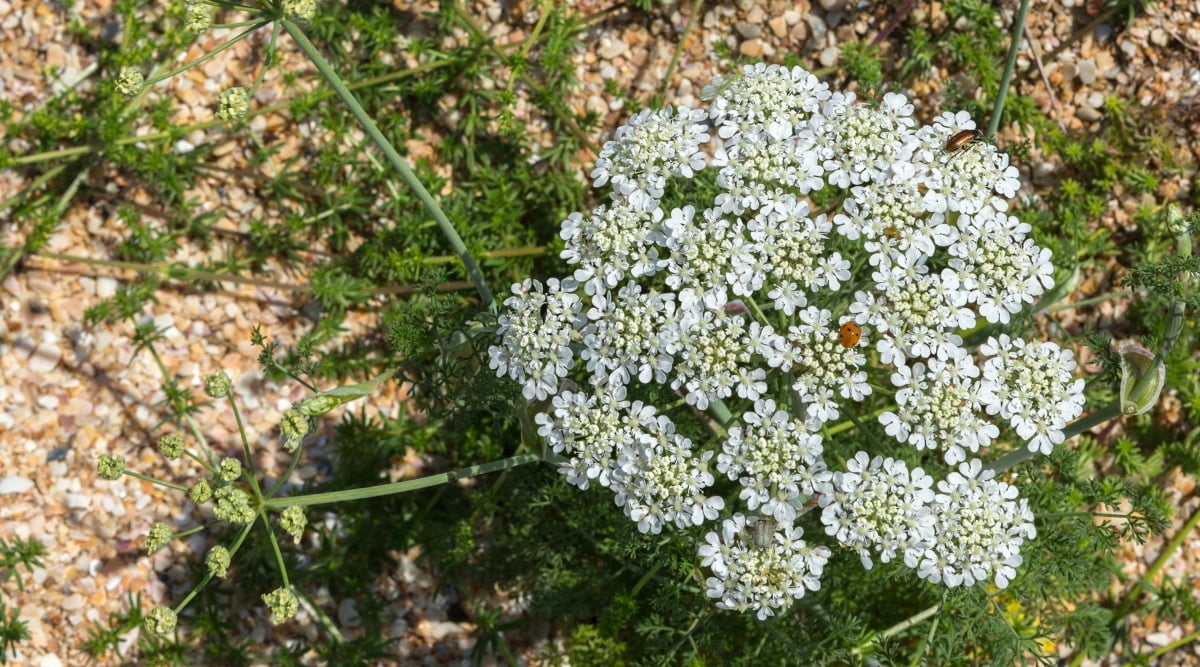
Soil pH is not important to this plant. It will grow well in acidic, neutral, and alkaline soil. In its native environment, the plant can grow in poor soil conditions, including chalky and sandy soil. However, if you want to maximize the blooming potential of your orlaya, they do best in soil that is fertile and well-drained.
If you have soil that compacts easily, like clay, use amendments that will loosen the soil and improve drainage, like compost, sand, and manure. For poor soil types, adding compost or other organic material, such as worm castings, will improve the nutrient content of the soil. It will also save time when it comes to fertilizing, as well as helping your plants produce more flowers.
Temperature and Humidity
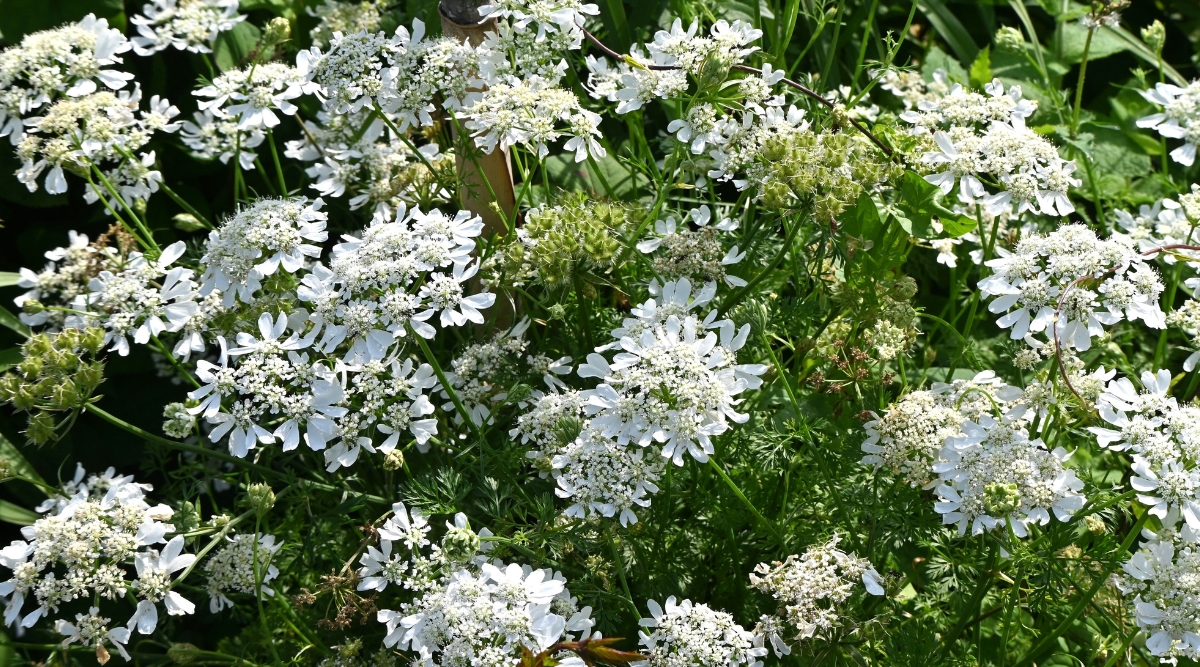
Orlaya’s natural environment is hot and dry, which is the ideal combination for this plant. Despite their warm-weather origins, these plants are surprisingly cold-tolerant. The plants can tolerate a light freeze, and the roots will endure temperatures as low as -5°F (-21°C). The seeds actually need a period of freezing and thawing to break down the outer casing, so some cold weather is a must.
Humidity is less important to these plants, and they are adapted to dry climates. Too much humidity can cause issues with fungal diseases, but in general, this is a plant that can tolerate a wide range of environments.
Fertilizing
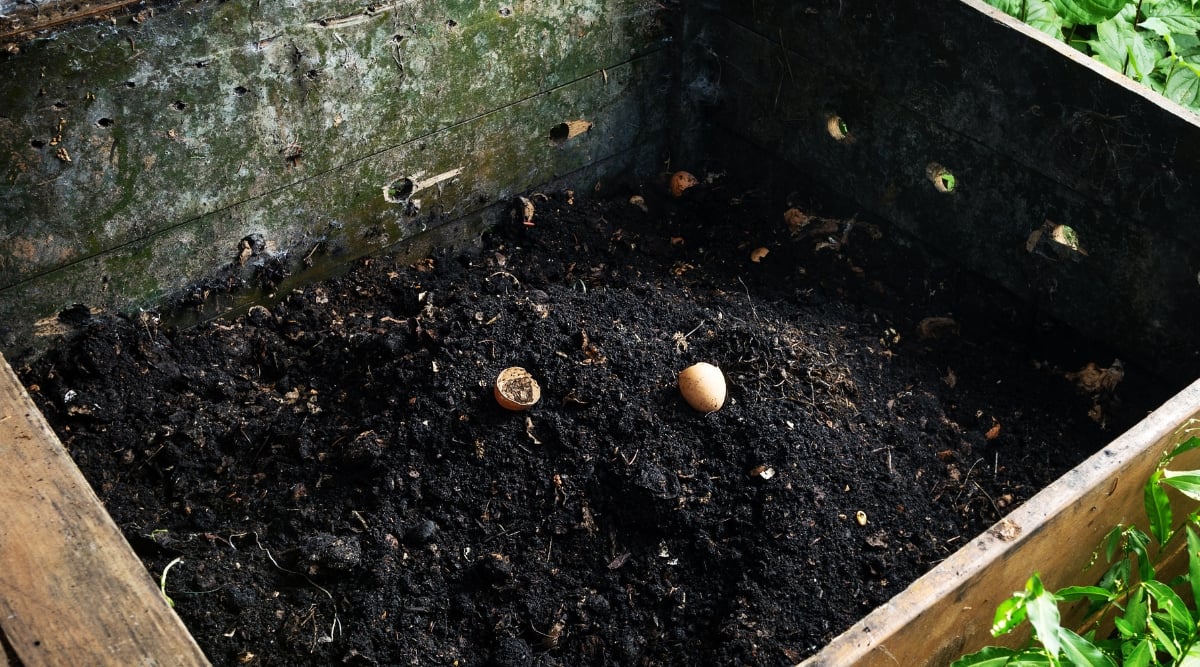
If the soil contains ample nutrients, there is no need to fertilize your orlaya plants. They are efficient at processing nutrients.
Before planting, it’s a great idea to work some organic compost or other fertilizer into the soil for a more long-term, gradual release of nutrients. If planted in poor soil, you may need to offer an occasional application of slow-release fertilizer to boost blooming power.
Maintenance
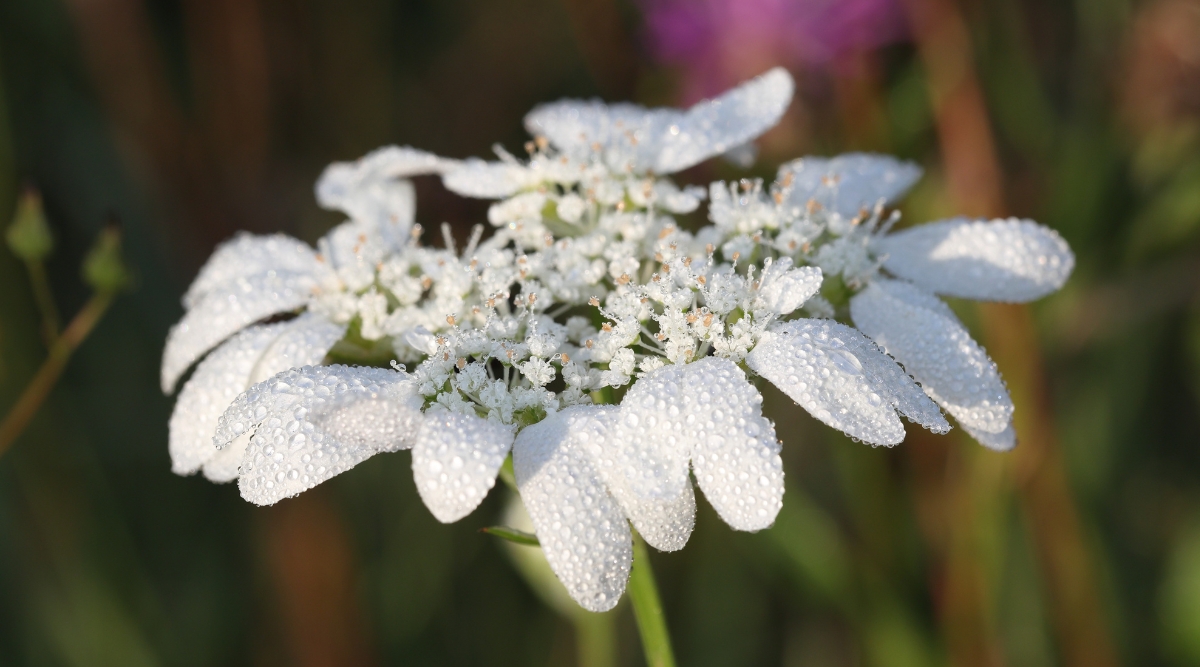
Orlaya is a cut-and-come-again type of flower. Deadheading and cutting the flowers will result in increased blooming throughout the season. Aside from removing the flowers to increase blooming, no pruning is necessary for this plant.
Growing in Containers
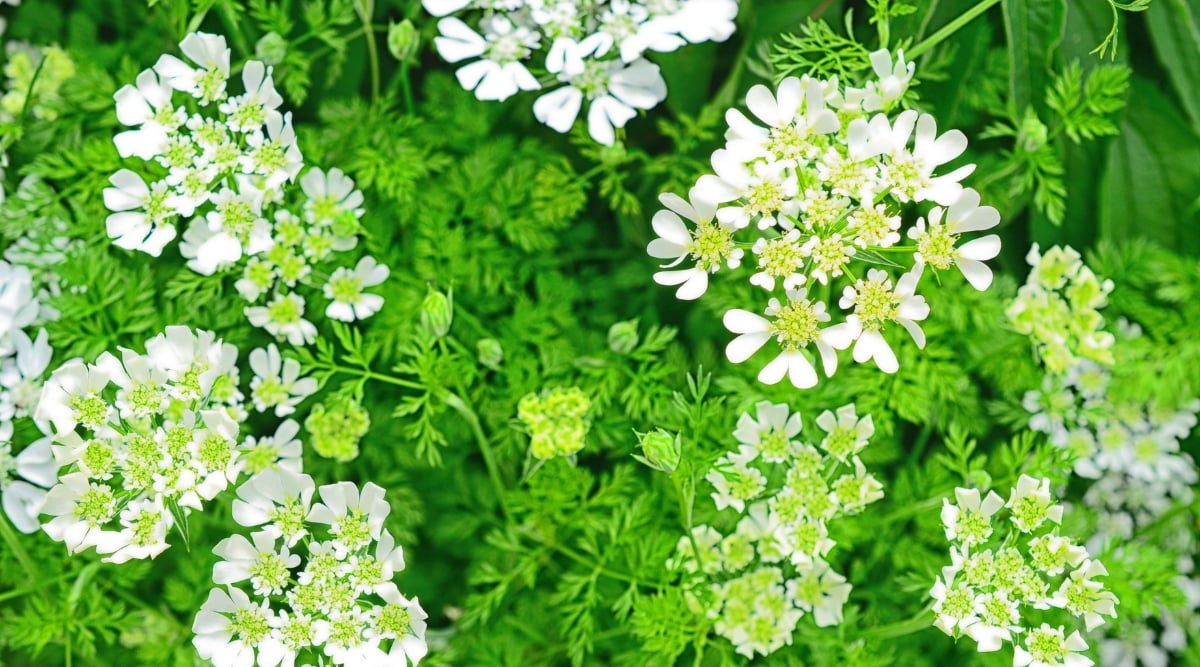
If you were hoping to grow this plant indoors, I regret to inform you that this is not a permanent possibility. Orlaya is a true annual and only lives for one year, even in warm climates. It can, however, be grown in pots outdoors if you prefer the moveability of container gardening.
When growing orlaya in pots, choose a medium to large-sized container that is at least 6 inches deep (preferably deeper) to accommodate the taproot. Ordinary potting soil is good for these plants. Water them regularly, and make sure that your container has proper drainage to avoid soggy roots.
Propagation
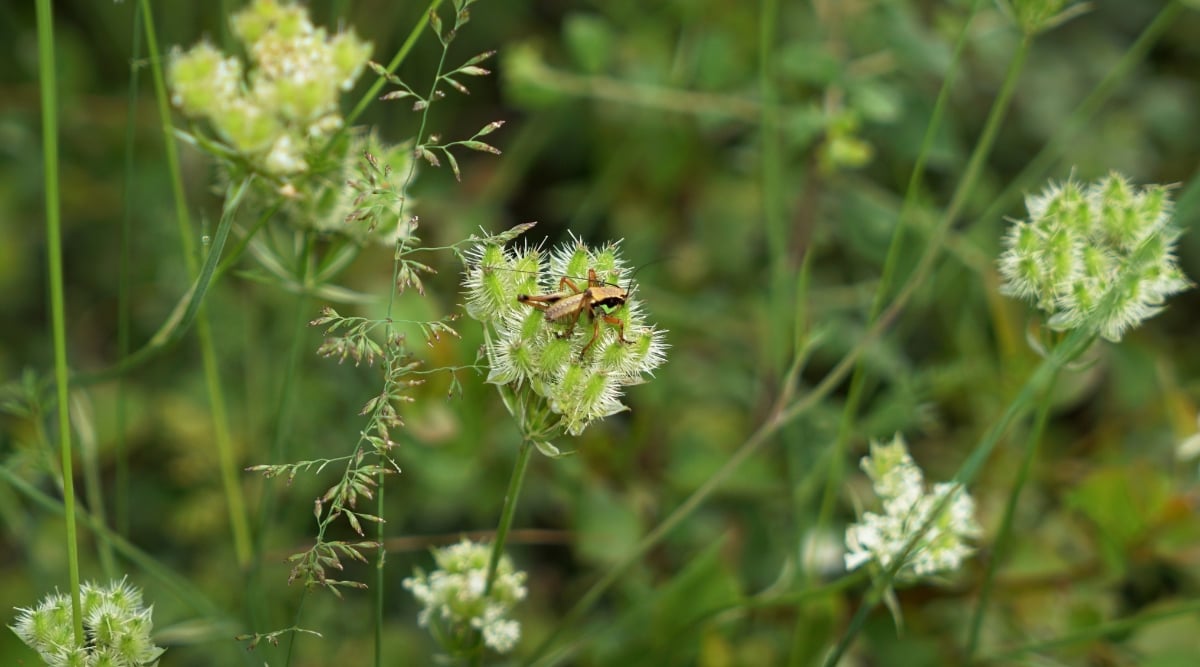
Growing from seed is the best way to propagate orlaya. After blooming, the flowers form seed heads, and they will reseed themselves. You can also collect and save the seeds yourself. Because these seeds need a period of freezing and thawing to break down the outer protective layer of the seed, it is best to plant your seeds in fall.
When starting seeds in fall, you can direct sow them in the garden. Plant your seeds at intervals of six inches, lightly pressing them into the soil but not burying them deeply. The seeds should be only lightly covered with soil for best results.
If you choose to start your seeds indoors, you must cold-stratify them by placing them in the refrigerator for one to two weeks. Sow seeds indoors for four to six weeks before you want to move them outdoors. Before planting, move your starts outdoors to a sunny spot to harden them off before planting them.
Harvesting as Cut Flowers

Orlaya can be a bit tricky when it comes to growing them for cutting. The stems tend to be somewhat floppy, which doesn’t make for a very nice addition to the floral arrangement. That said, this flower is a popular one among cut flower enthusiasts. Keeping these flowers looking good after cutting is impacted by the way they are harvested.
To harvest your orlaya flowers for use in floral arrangements, it is important to wait until the flowers are fully open. Cut the length of stem you need, ignoring any axillary shoots. As soon as you cut the stems, immediately immerse them in cold water. Place the stems in water in a cool, dark room, allowing them ample time to absorb the water.
After about six hours (sometimes more), your flowers should be well-hydrated and ready to come out of hiding. Trim off any side shoots with immature flowers that are still floppy, and make sure to get the stems back in water to prevent wilting.
Common Problems
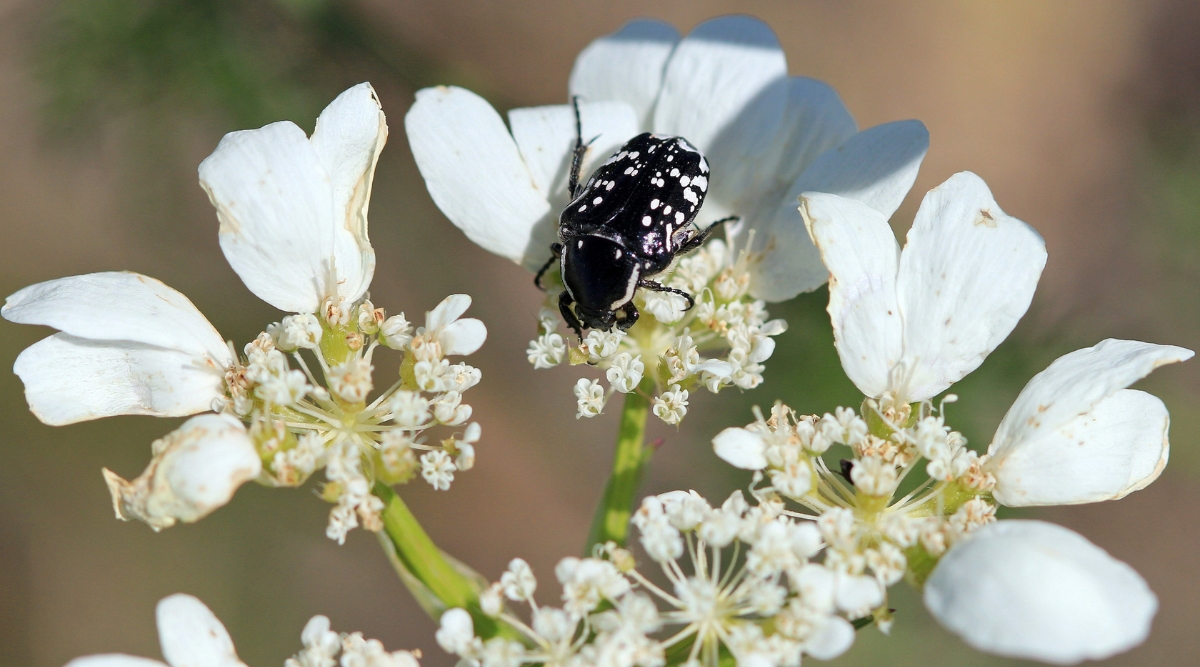
This plant is not known to have many issues with pests or diseases. They are attractive to beneficial insects, which keeps the populations of harmful insects to a minimum. If you are experiencing a lack of or sparsity of flowers, the culprit is most likely a lack of sunlight or water.
Frequently Asked Questions
Yes, orlaya will self-seed if allowed to. If you want to help your plants along, wait until the seed heads have dried and then shake them a bit to broadcast them.
No, there are no toxicity issues with this plant for animals or humans.
No, orlaya is not considered invasive and is, in fact, considered a good alternative to other plants that are similar in appearance and considered invasive.
Final Thoughts
Orlaya makes a beautiful addition to the cottage, pollinator, or cutting garden. It can be used in so many capacities to add texture and beauty to your flower beds. This easy-to-grow, pest and disease-free flower will add plenty of charm and beauty to your garden.

